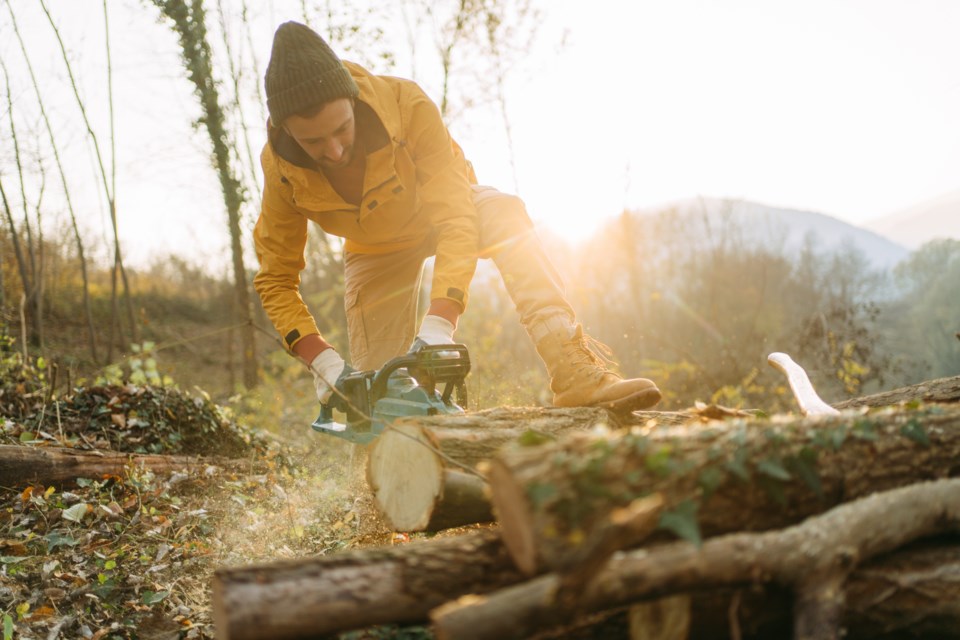A few weeks back, I voiced my support for phasing out summer campfires in Whistler, and potentially the province. The hotter and drier temperatures we’ve experienced summer after summer have made this relatively harmless tradition of sitting around a campfire into a proverbial dance with the Devil. The local governments know it, hence the more frequent fire bans on municipal land, as well as in provincial parks and campgrounds. There will always be the folks who ignore the rules and will have their campfires in the backwoods, but hopefully, a slow and gentle culture shift will phase out those risky fires as well.
Winter heating with firewood, however, will likely remain a staple of Canadian homes for years to come. I wouldn’t try to estimate how many homes in Whistler have wood fireplaces in 2023, but I’m sure at some point in the past it was all of them. Burning wood to heat your home not only creates a cosy living-room atmosphere, it can help keep the hydro costs down, especially in homes like mine that still heat on inefficient baseboard heaters.
Wood burning is technically considered carbon neutral (since the CO2 emitted is equivalent to the tree’s biomass breaking down over time), but that theory relies on sustainability of a new tree growing in its place. Carbon monoxide and sooty particulates are definitely harmful, but aren’t as much of a threat in rural areas. In any case, burning wood for heat is still very much standard practice during Canadian winters. According to surveys done by Statistics Canada, households outside of Canada’s large cities were four times as likely to report owning a heating stove than city folk.
So, how to keep feeding that fireplace for the six or more months of winter mountain temperatures? It’s a chore many households deal with annually, provided they have adequate storage on their property. Buying wood from a supplier in the Sea to Sky and getting it delivered to your driveway was rarely ever cheap, and with the cost of transportation going up significantly alongside inflation, for the 2023-24 winter you need to save a small fortune for a cord of wood.
With my injured shoulders this year, I decided to give another method a go. I took the funds that would normally plonk a big pile of wood in my driveway and bought myself a chainsaw, a heavy-duty maul and splitter and a few other safety and maintenance items. Having not grown up harvesting wood for winters in Ontario like some of my friends, I had some learning to do.
The first part is sourcing. While you can occasionally get lucky with people offloading felled trees around town, it’s not the kind of thing you can rely on to stack a winter’s worth of firewood (it’s great for topping up your stockpile, though).
The first step is to obtain a “free use permit to cut firewood for personal use” from the Sea to Sky Natural Resources District. It has a long list of rules and conditions, such as only harvesting fallen trees a certain distance from forest service roads and an adequate distance from water sources. The map of areas where you are allowed to harvest isn’t the easiest to read, either, so be ready to do your homework before driving your truck into the forest.
A trailbuilder friend of mine gave me the initial rundown on the chainsaw: how to safely start, how to do simple cuts, and even managing the inevitable kickback. Kickback is when the nose of the chainsaw’s bar strikes an object or gets pinched, snagging momentarily and kicking the running chainsaw towards your body. It’s one of the common causes of chainsaw accidents, and requires constant vigilance (especially when doing bigger cuts)—and it’s why I always wear my protective chainsaw chaps.
Once I have a pile of rounds, it’s time for the therapeutic part. Splitting rounds with a hefty piece of sharpened metal attached to the end of a stick is quite satisfying, especially when your wood has had some time to dry and splits with minimal effort. In my first afternoon of splitting, I started to get a feel for which types of wood splits better than others, and when a tangle of knots becomes more work than they’re worth.
Like any new activity or recreation, you use a lot more energy when you don’t have the right wood-splitting technique. Good thing there are YouTube personalities like Buckin’ Billy Ray Smith who can show me the ropes on everything from cutting large logs on the ground to efficiently splitting perfectly-sized pieces for my fireplace.
This firewood harvesting venture of mine hasn’t paid itself off just yet. I’m still learning more efficient ways to source, transport, and buck a winter’s worth of firewood to make it more worth my time and labour investment versus paying someone to deliver the wood to my house. But so far, it has proved a worthwhile learning experience, and it’s got me out of the house during a summer when I can’t mountain bike. Sourcing my own wood to heat my home does feel rewarding, even if it’s more work than I initially anticipated. Plus, it’s about the most Canadian thing I’ve ever done.
Vince Shuley is always looking for reasons to head into the woods. For questions, comments or suggestions for The Outsider, email [email protected] or Instagram @whis_vince.




